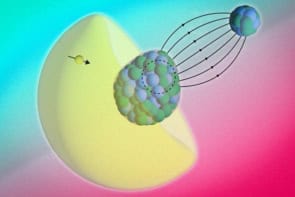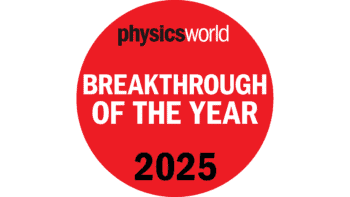Physicists have moved a step closer to making a Bose-Einstein condensate in a semiconductor for the first time. Researchers at the University of California at Berkeley, the Lawrence Berkeley National Laboratory and the University of California at Santa Barbara have demonstrated the existence of distinct regions of confined degenerate excitons in a semiconducting material (C W Lai et al. 2004 Science 303 503). An exciton is the bound state of a negative electron and a positive “hole”.

A group of particles undergoes Bose-Einstein condensation when their de Broglie wavelength becomes comparable with their average separation and they all collapse into the same quantum ground state. Bose-Einstein condensation plays a central role in superfluidity and superconductivity, and has been a subject of intense research in low-temperature physics since an atomic gas was condensed for the first time in 1995. However, it should be easier to create a Bose condensate with excitons because they are lighter, and therefore condense at a significantly higher temperature than atoms.
Excitons are unstable because the electron and hole can recombine to emit a photon, or lose their energy in another way. In 2002, Daniel Chemla and co-workers at Berkeley and Santa Barbara made a semiconductor structure that was designed to confine the electrons and holes in the excitons in different quantum wells. The excitons were more stable in this structure and therefore could be cooled down more easily.
The same team has now found that it can confine tens of thousands of excitons in an area of about 10 microns squared by shining a laser of moderate intensity on the structure at temperatures around 10 Kelvin (see figure). It appears as if the particles have been “trapped” by naturally occurring defects in this region. According to Chemla and co-workers this is consistent with what is expected in a Bose-Einstein condensate but still does not provide definite proof of a condensate.
“These insights could lead to new strategies for engineering confined exciton systems and open up new opportunities for making Bose-Einstein condensates in solids,” team member Chih-Wei Lai told PhysicsWeb.



